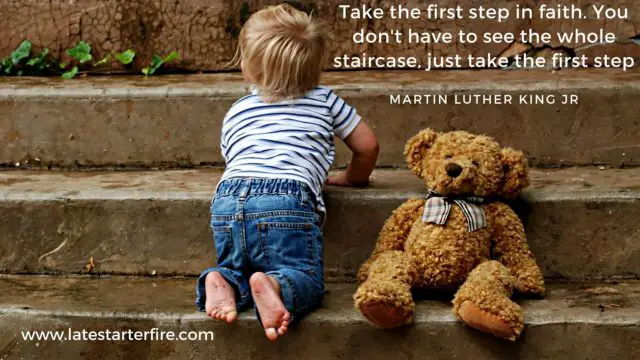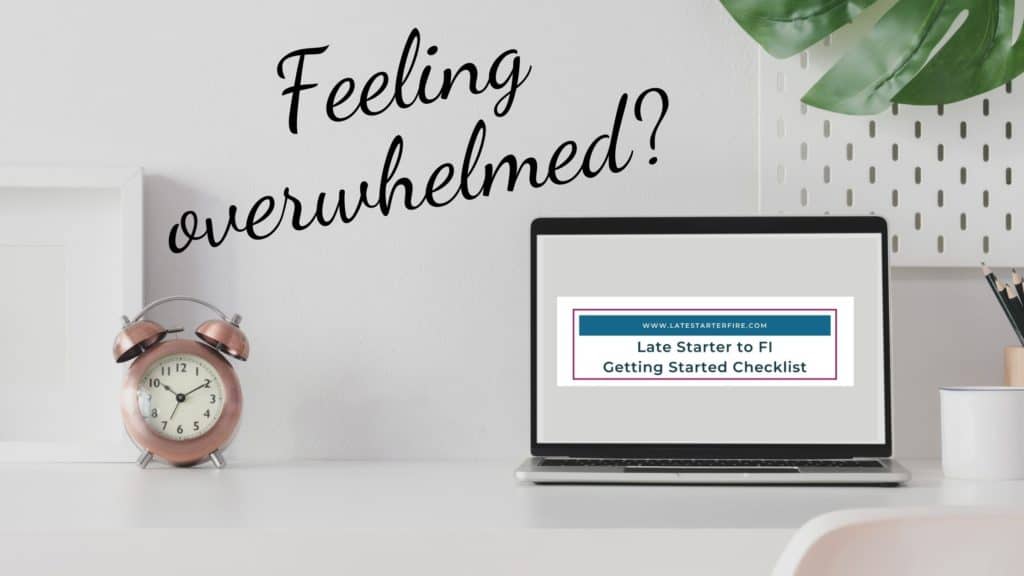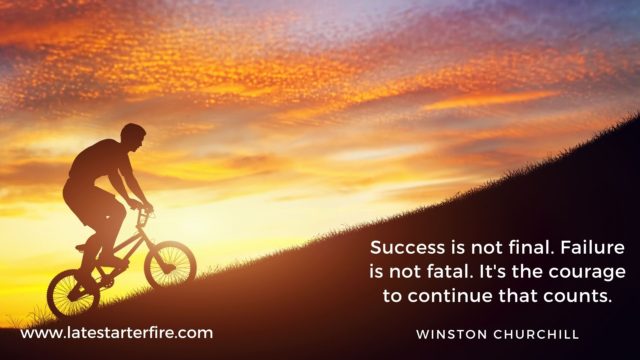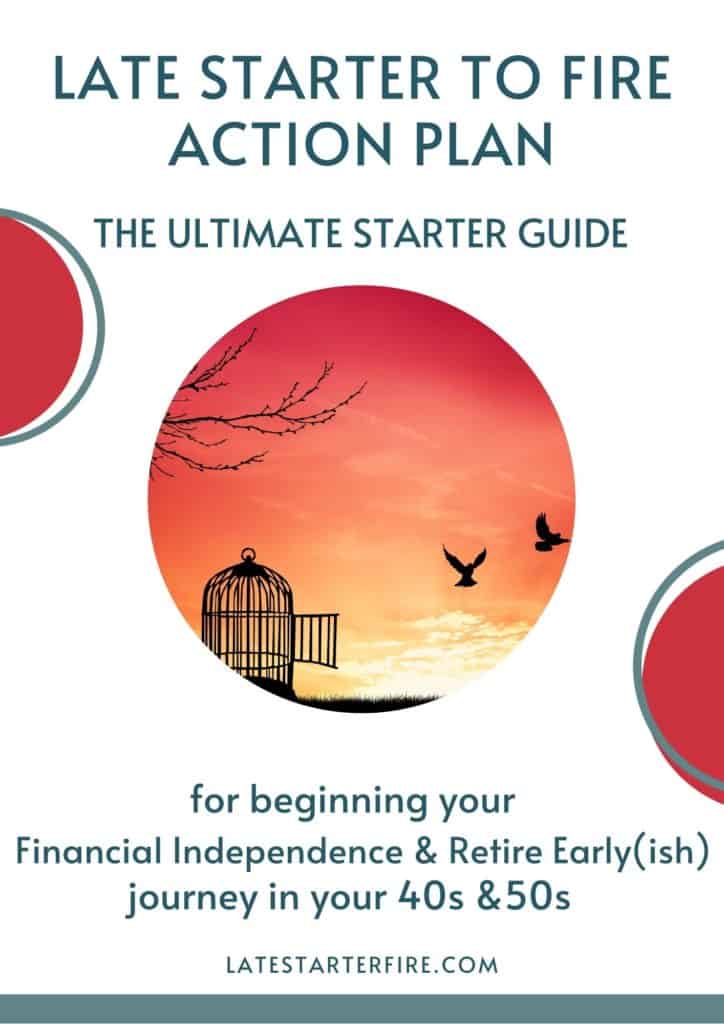
What is stopping you from taking action today?
Today. Not tomorrow. Not next week. Today.
Does any of the following sound familiar?
“I am too old.”
“I am shit scared I’ll make a mistake I cannot recover from.”
“I don’t have enough time.”
“I love my lifestyle – I cannot possibly cut back on any expenses, as suggested by the FIRE experts.”
The word ‘frugal’ conjures up an image of Scrooge counting his coins in a dingy basement with no friends.
The word ‘budget’ brings up feelings of restriction and suffocation.
“Investing is too complicated. I can never understand the jargon and terms.”
“I can’t make any more money in my job.”
“I am already too stressed out trying to juggle everything in my life – I just don’t have the energy or space in my brain to learn anything new, especially something so complicated as being better with money.”
“It is too overwhelming. I have no idea where to start.”
I know because I have had EVERY ONE of those thoughts.
And yet, despite all those limiting beliefs plus starting late to the FIRE journey (at 47 years old) and not earning 6 figures, I celebrated a major milestone a few weeks ago when I arrived at Coast FI.
For a bit of context, it took me 3 years.
Are you READY to TAKE ACTION today?
🔥 practical tips & strategies
🔥 step by step guide
🔥 cut the overwhelm, second guessing & paralysis by analysis
Taking action
I was so excited when I realised that the balance in my retirement account (superannuation) is at a point where it will grow over the next ten years to a figure that will support me for eternity.
It will just compound away unobtrusively in the background without me being able to get my grubby hands on it and without me adding a single cent to it. For the next ten years until I can get my grubby hands on it.
Just to be clear here – I am not special. I am not better or smarter or more knowledgeable than anybody else.
But as I reflect on the past three years since I stumbled upon FIRE while googling “How much I need to retire”, the ONE thing I am most proud of is that I took action.
Just that.
I took action.
Was I scared? Yes
Was I paralysed by all the analysis and inaction? Yes
Did I think it would be too difficult? Yes
Did I take a perfect route or the ‘best’ actions? Nope
Did I know I would reach Coast FI? Heck, no, no, no, not at all.
And yet, here I am three years later. At Coast FI.
You may not think it’s a big deal. But it is a humongous deal for me. When I think back to the me 3 years ago, petrified and stressed that I wouldn’t be able to retire at the traditional age. And the me now, feeling relieved and liberated that traditional retirement is taken care of.
Taking action is a habit
What I learned over the past 3 years is that taking action is a habit.
The more you do it, the easier it gets.
And that taking action in one part of my life – getting my finances in order – leads me to taking action in other parts of my life eg transitioning to a less stressful role at work and working 38 hours instead of 50, 60, 70 hours a week.
I started to value my time and long to have more of it doing what I want to do.

Feeling Overwhelmed?
Use this FREE Checklist to start your journey to Financial Independence
Start small
What was my very first step after waking up in a cold sweat?
I found my retirement account numbers and registered for online log ins. Yes, that small.
Then I looked at my balances.
And started about consolidating superannuation accounts. So I did that.
Eventually I read about the importance of having low management fees and optimised the funds my account was investing in. But that was many, many steps later.
When I discovered FIRE and despaired over my savings rate, I cut out takeaway coffee. Again, the smallest expense. And yes, maybe such a small expense won’t make a dint in my savings rate.
But it gave me confidence that I could survive without takeaway coffee (something I mindlessly bought each day) and that I was capable of making good quality coffee at home. I discovered that I enjoyed making it and drinking it in peace at home before rushing off to work.
And if I can cut out takeaway coffee, I can cut out Friday takeaway meals which were unhealthy for me anyway.
I start looking at other areas of my life.
I start asking myself what I value in life, what my priorities are, what I enjoy and what I don’t care about.
This helps me decide where to spend my money and where not to spend it. Why am I paying for Netflix when I never have time to watch it? Why not just pay for it when I have several shows that I ‘must’ watch?
One action invariably leads to another. And soon it becomes a habit.

Fear of making a mistake
This is a big one for me.
I don’t like to fail. At anything.
Initially, I was so scared of making the wrong decisions, leading me to be paralysed. What worried me most was that I didn’t have time to correct any mistakes.
The what ifs were driving me crazy.
When I consolidated my superannuation accounts, I rolled over my smaller balance at AMP (a retail fund) to my larger balance at REST (an industry fund with lower fees). I lost $3000 in this transaction.
Unbeknownst to me at the time, the Government would legislate several months later, that rollovers should not incur a fee. I could have saved $3000 if I had waited a few months.
But I am still glad that I acted when I did.
Because I had felt empowered when I did it. Me, who had never interacted with the superannuation companies. Me, who had never cared about my balances or what the funds were invested in or how much the fees were or what I was paying for insurance within the fund.
I could see the new me – the one who was brave enough to make decisions on where to invest my money.
And it snowballed from there.
Once I began, I found that I was capable of learning and understanding the concepts. It doesn’t matter if I make a mistake here and there. Things will work out in the long run. What is the worst case scenario? I can’t fully retire at 55 but hey, I can most likely work part time. If I continue to take action.
Final thoughts
What is holding you back from starting your FIRE journey today?
Taking action can be scary especially as late starters, when time is already not on our side.
But you can start by making small changes or decisions and it will snow ball. Taking action will become a habit.
I can’t promise that you’ll be a millionaire or that you’ll retire early by taking action today.
But I can promise you that your progress is inevitable – you just have to start. Today.



